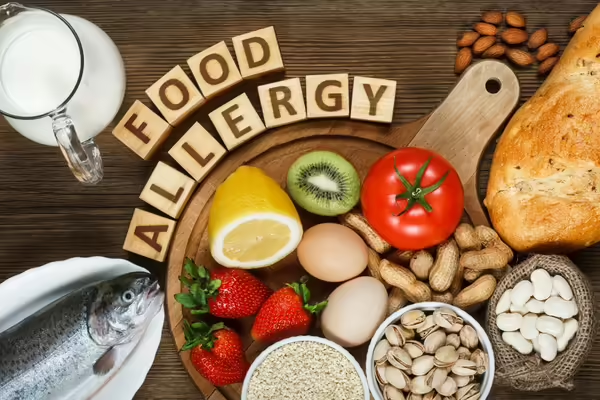
May is Allergy Awareness Month! Did you know 33 million Americans have food allergies? That’s 1 in 10 adults and 1 in 13 children, and allergy prevalence is on the rise.
A food allergy is when your body’s immune system reacts to a certain food. Signs and symptoms can include hives, vomiting, swelling of the lips, face, tongue, or throat, difficulty breathing, and, in severe cases, anaphylactic shock—a life-threatening reaction that affects the whole body.
There are now nine major food allergens: peanuts, tree nuts, fish, shellfish, eggs, milk, wheat, soybeans, and sesame. While 9 foods account for most food allergies in the U.S., virtually any food can cause an allergic reaction. Even a very small amount of the problem food is enough to cause a reaction.
Can people outgrow their food allergies? Yes, it’s possible! For example, many children outgrow food allergies to milk, soy, eggs, and wheat. However, allergies to peanuts, tree nuts, fish, and shellfish are less likely to be outgrown.
Taking care when dining out with food allergies
Food allergies are not only life-threatening, they are also life-altering. People with food allergies must always be vigilant to avoid foods they are allergic to.
Dining out presents additional challenges when certain foods need to be avoided. Here are 5 tips to take care when dining out:
- Choose the right kind of eating establishment.
- Call ahead or check out their menu beforehand.
- Dine early or late.
- Clearly explain your dietary restrictions.
- Confirm your order before eating and thank your server for their help.
Allergens can appear in unexpected places. For example, fish or shellfish are sometimes dipped in milk to reduce their fishy odor, posing a problem for people with milk allergy.
Never assume anything about how a food has been made or served. Don’t be afraid to ask questions about ingredients before eating a food that you have not prepared yourself.
Common foods with hidden allergens include marinades, sauces, fried foods, seasoned rice/vegetables, and salads.
To learn more about food allergies, hidden sources, and allergy-friendly recipes, visit foodallergy.org.
University of Illinois Extension develops educational programs, extends knowledge, and builds partnerships to support people, communities, and their environments as part of the state's land-grant institution. Extension serves as the leading public outreach effort for University of Illinois Urbana-Champaign and the College of Agricultural, Consumer and Environmental Sciences in all 102 Illinois counties through a network of 27 multi-county units and over 700 staff statewide. Extension’s mission is responsive to eight strategic priorities — community, economy, environment, food and agriculture, health, partnerships, technology and discovery, and workforce excellence — that are served through six program areas — 4-H youth development, agriculture and agribusiness, community and economic development, family and consumer science, integrated health disparities, and natural resources, environment, and energy.